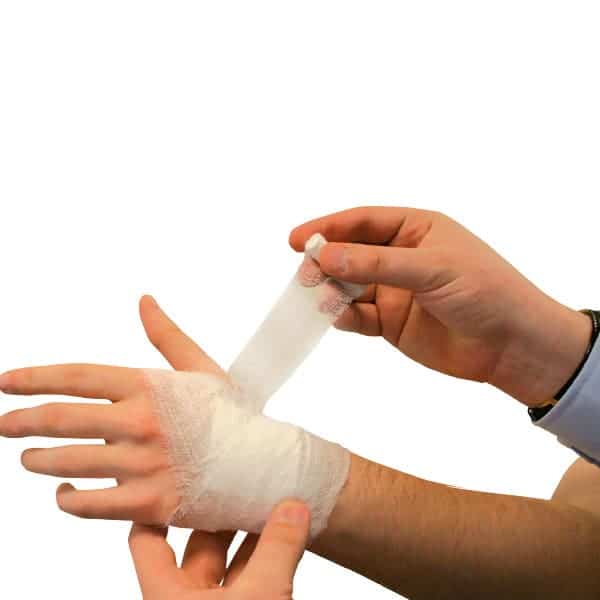Resistance to antibiotics is one of the main threats to global health, with two million new infections in the US every year showing resistance to antibiotics. That’s why identifying and treating bacterial infections earlier is key, helping to improve patients’ recovery and reducing the spread of microbes.

A team of researchers reporting in the American Chemical Society developed a set of bandages that change their color by sensing drug-resistant and drug-sensitive bacteria in wounds, also treating them accordingly.
Xiaogang Qu from the University of Science and Technology of China and a group of colleagues created a material that goes from green to yellow by contacting the acidic microenvironment caused by a bacterial infection. The material is incorporated into the bandage and releases an antibiotic that kills the drug-resistant bacteria.
“We constructed a portable paper-based band-aid (PBA) which implements a selective antibacterial strategy after sensing of drug resistance. The colors of PBA indicate bacterial infection (yellow) and drug resistance (red), just like a bacterial resistance colorimetric card,” the researchers wrote.
The bandages turn red in color if in the presence of a drug-resistant bacterium, all thanks to the action of an enzyme produced by said microbes. When that happens, the researchers shine light on the bandage, which causes the release of reactive oxygen species that kill or weaken the bacteria.
“Compared with traditional PDT-based antibacterial strategies, our design can alleviate off-target side effects, maximize therapeutic efficacy, and track the drug resistance in real-time with the naked eye. This work develops a new way for the rational use of antibiotics,” the researchers wrote.
Thanks to their work, the team proved that the bandage speeds up the healing of wounds in mice that had been infected with drug-sensitive or drug-resistant bacteria. Now, the challenge will be to expand its use to practical applications, which the teams believes possible due to the low cost and the easy operation of the device.
This is not the first time a smart band-aid is developed for diverse applications. Researchers in Zurich developed a type of bandage that simultaneously repels blood and promotes clotting, while researchers in the US are looking at synthesizing spider silk for a new time of bandage.









